At this time of year when cuisine blogs are awash with recipes for cookies and roast beast for the Christmas feast, I thought it would be a nice idea to create a notional menu for what the first Christmas feast might actually be like. In truth, that concept was brought to me by a writer from Bon Appetit magazine who wrote a great short piece based on my input. This post will look at the First-Christmas menu in more depth and discuss the reasons behind some of the choices. It will also examine some of the issues that influence our ideas regarding the birth of Jesus and hopefully dispel some myths about the event.
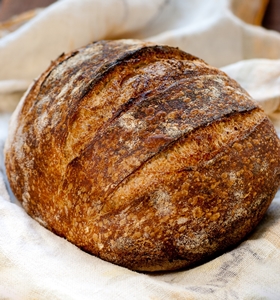
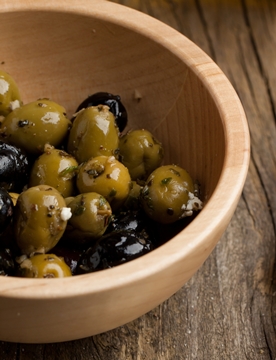
__________
There is a lot of information in the bible about the individual foods that people ate, but not a lot of information about how they put ingredients together. With no recipe “tablets” to work from, I have prepared a notional menu for a feast that is based on these lists of ingredients, other historical knowledge, and a lot of creativity on my part. It is rooted in Sephardic tradition and in that respect breaks us out of the European cultural mindset that dominates most Christmas celebrations in the west.
Starters
Mixed-grain Bread
– Olive oil with za’atar or other herbs for dipping
– Plate of fresh herbs
Lentil salad with cracked or sprouted grains
Plates of Dates and Figs
Mixed local olives, salted, cured and brine marinated
Wine served throughout the meal
Main Courses
Roasted Fish with Herbs and Honey
Roasted Pigeon or Doves with Herbs and Pomegranate Syrup
– Fish sauce garum to use as a table condiment
– Small bowl of salt
– Citron or Rose-petal Jam to eat with meat
Roasted Barley or Millet Pilaf
Sweet Endings
Honey-Sweetened Herbal Tea or Raisin Wine
Date and Pistachio sweets
Dried apricots and raisins
Charoset
__________
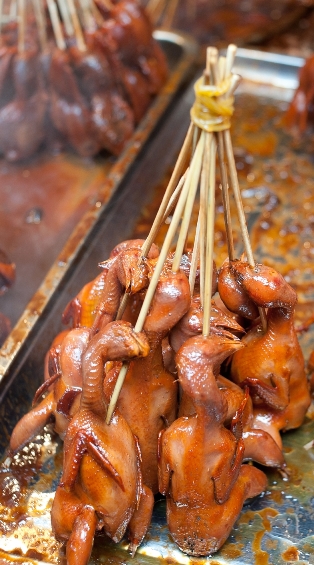
Za’atar is a local herb (Origanum syriacum) that is mixed with other ingredients – notably sumac, and sesame or pine nuts and a litany of other choices. This would have been mixed in olive oil and used to flavor bread as a dip. Plates of herbs, like dill or fennel, might have also offered flavor to the bread and would have been served as fresh as possible.
Lentils or fava were very common source of food and might be eaten with sprouted or cracked wheat or barley for flavor and texture. Cumin and coriander would be likely flavorings as would leek or onion.
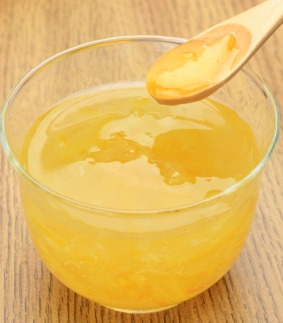
Grape or mixed fruit wine would be served throughout the meal. It would have the resiny overtones of a modern retsina and would be sweetened with figs in the amphorae or herbs like rosemary. It might be diluted with water, especially for the women.
Looking at the main courses, we find the option of Roasted Fish with Herbs and Honey that is based on Luke 24:41-43, in which Jesus as a grown man eats fish with honey. The fish would probably be a mullet, or sea cod (cheap and easy to catch as surface-water fish), but it could also be a grouper, sea bass or sea bream. Depending on the fish, thyme and/or dill with cilantro could be used as herbs. If it was a large fish it could be cooked on a spit or open fire. Smaller fish or fish slices or filets would be cooked in an oven if the family had one or if a communal oven was available for use.
After fish and eggs, pigeon or dove was the most commonly eaten meat in ancient Israel. Lamb was for the wealthier or for holidays and cow/oxen/bull was for the feast of the wealthy. I can see pigeons spitted and covered with herbs like mint and cilantro or spices like cinnamon and then roasted and basted with pomegranate syrup as a delicious entrée.
Since Augustus was still on the throne in Rome, the use of garum in Roman Palestine would be likely. The archaeological record tells us that Jews had special garum made by the Phonecians using fish allowed by Kosher dietary laws. This could be a table condiment and mixed with herbs (such as oregano) or mixed with water, honey or wine. This would, of course have enhanced the flavor of food as regular readers of this blog well know.
Since it is the Feast of Sukkot, citrons would be available. A common way to eat them is to make jam out of them and use that to flavor meat. Another option is rose-petal jam.
The meat would be served with (or on) a pilaf of roasted barley or millet with herbs and spices. Of the two grains, millet would be fresher at this time of year as it was just harvested in August.
For a sweet ending to the meal, people in the ancient Levant drank all manner of sweet herbal teas and could have enjoyed some after the main meal. Alternatively, a sweet, raisin-based wine could be served to clear the palate and end the meal. Tea would be sweetened with local honey made by imported Anatolian bees that were fed on citrus blossoms and wild desert flowers.
Any manner of sweets made from pounded and rolled dates covered with pistachios could be served or simply a plate of dried apricots and raisins. A sweet spread of nuts and dates like modern charoset could have been enjoyed with bread or all by themselves.

A few more cultural points in closing: Bethlehem would have been bustling with lots of out-of-towners (like Joseph and Mary) because of the census. Forget what you have learned about,” no room at the inn”, there weren’t many inns (or even any) and Mary would not have stayed in one as a woman. The only women in “inns” were working there. They would have stayed with Joseph’s relatives and would have been greeted and treated as extended family. Because other visitors also sought the family’s hospitality at the time of the census, there was probably no room for Mary and Joseph in the family’s “guest room”.
Mary probably gave birth in a cellar off of a central courtyard that was used to store supplies for the family and prized animals in the evening or in times of bad weather. A private and isolated area was chosen because of the physical mess of childbirth and because of Jewish cultural practices separating men and women at this time. She was probably attended by a midwife or older women from the family.
If Jesus’s birth was celebrated at all, it would have been in with wine and a bit of noisiness by the men of the family as was custom after the birth of a child. If there was a celebratory meal, there were no tables or chairs, a floor cloth or mat (or both) would be laid down and communal dishes with food placed upon it. Guests would sit or recline around the “table” and converse as they ate and drank. There were no individual plates; food went from communal bowls or platters – to hand – to mouth.
It’s also possible that Mary would not have taken part in a feast because women are considered “unclean” for one week after the birth of a boy and for two weeks after the birth of a girl. She might have had food brought to her by birth attendants or female family members, at least in the hours or days after the birth.
I hope this post brings some fresh ideas to your Christmas table, I’ve got some other ideas up my sleeve for the kinds of foods the three kings might have brought to an epiphanal feast to share as well. Remember, however you chose to celebrate, enjoy the time with family and friends and reflect on why you come together at this time.
(Words by Laura Kelley. The major points of this post first appeared in an article on Bon Appetit online entitled, What Would Jesus Eat. Photo of Sourdough Bread by Djauregui@Dreamstime; Photo of Mixed Olives by N. Larina@Dreamstime; Photo of Roasted Pigeon by Zhiqian-Li@Dreamstime; Photo of Citron Jam by Reika7@dreamstime; Photo of Barley Pilaf by Richard-Semik@Dreamstime; and Photo of Dried Apricots and Dates by M. Averyanova@Dreamstime.com)

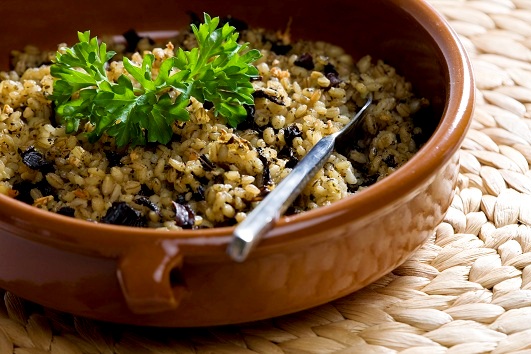
1 thought on “A Feast for the First Christmas”